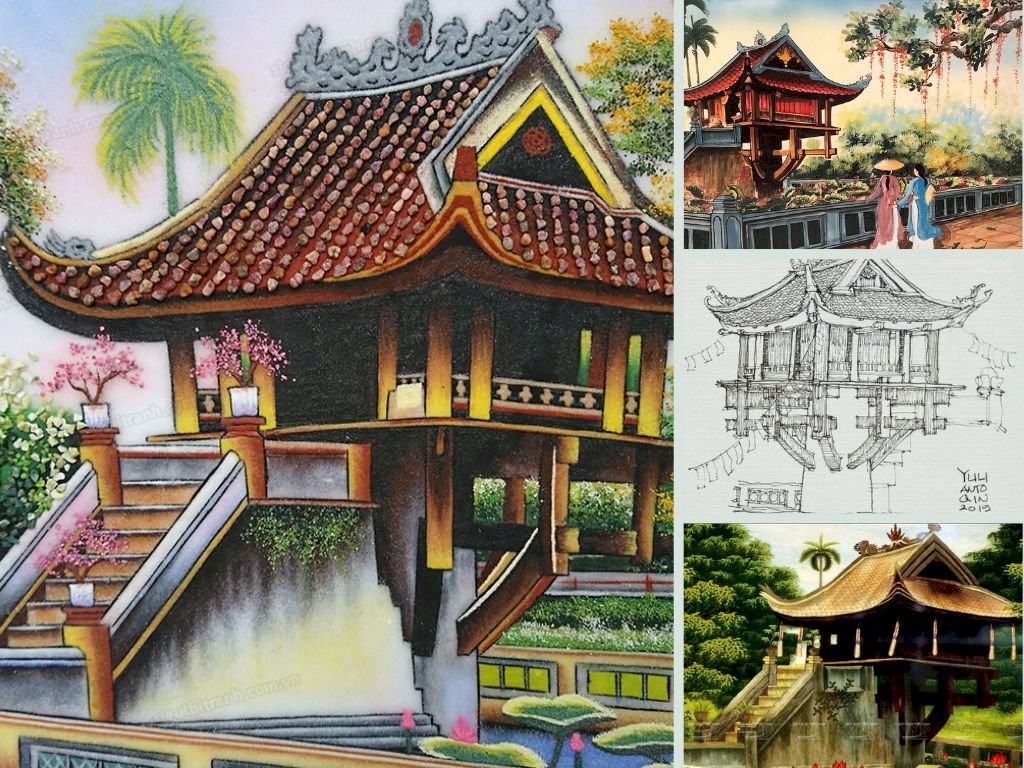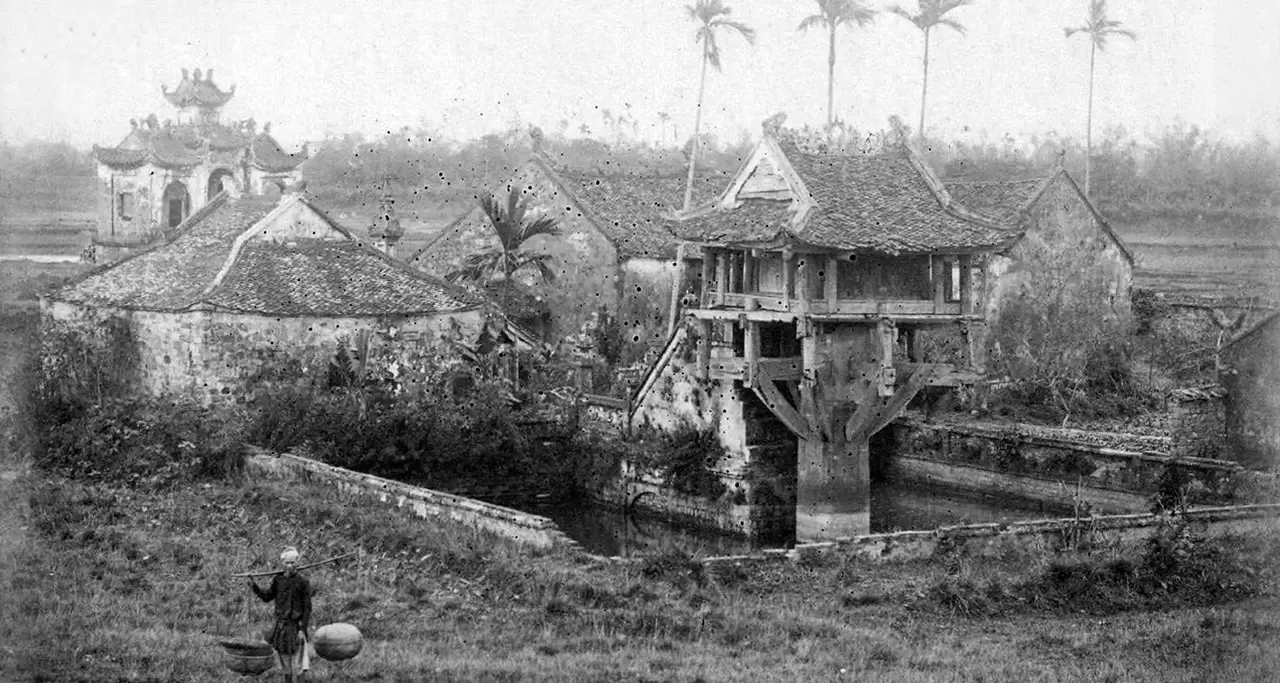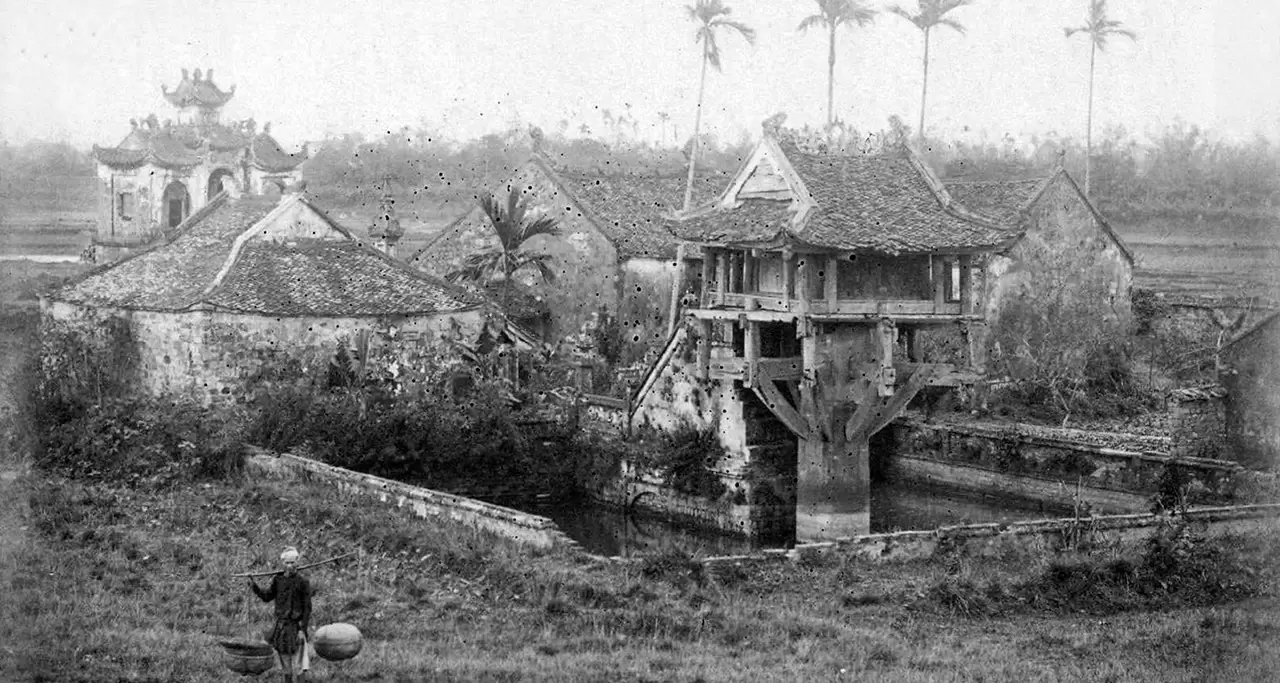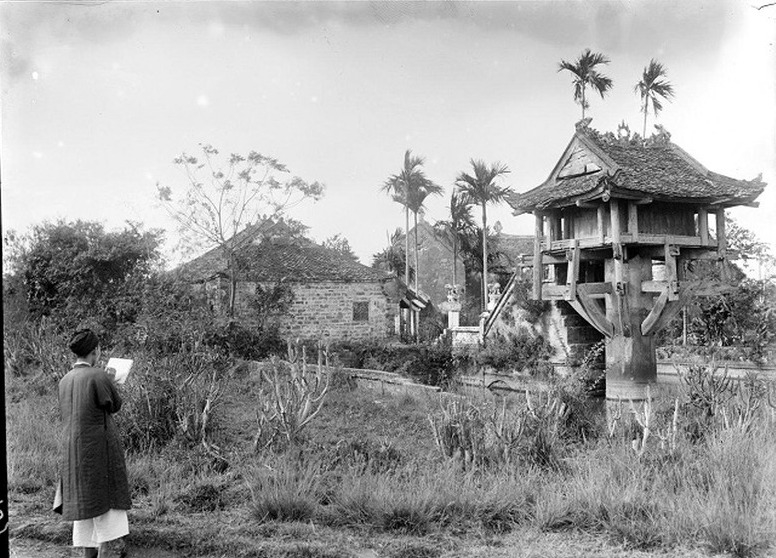In Hanoi, there is a must-visit tourist destination, and that is the One Pillar Pagoda. This pagoda is not only famous for its unique architecture, considered the pinnacle of Asian architectural art, but it is also a spiritual destination and a cultural symbol of the capital city Hanoi with a thousand years of history. Let’s explore more about the One Pillar Pagoda in Hanoi in the following article!

Introduction to One Pillar Pagoda: Address, Opening Hours & Ticket Price
Traveling to Hanoi has long captivated tourists, not only due to its distinctive culinary scene but also its numerous historical and cultural landmarks, including pagodas. Among the most renowned pagodas in the capital are One Pillar Pagoda, Tran Quoc Pagoda, and Phuc Khanh Pagoda.
Where is One Pillar Pagoda located?

One Pillar Pagoda is situated in Ba Dinh District, on a street named after the pagoda itself. Located just behind Ong Ich Khiem Street, the pagoda is part of the complex including Ho Chi Minh’s Mausoleum and Ba Dinh Square. Consequently, the opening hours for visitors depend on the schedule of these two sites. One Pillar Pagoda welcomes guests from 7 AM to 6 PM daily.
Ticket Price and Visitor Information
- Vietnamese visitors, whether coming for worship, Buddhist ceremonies, or general sightseeing, are not charged an entrance fee.
- For international tourists, the entrance ticket is priced at 25,000 VND per person.
Transportation options
- Personal vehicles: You can use Google Maps to find your way or opt for taxi or Grab services for convenient transportation to the site.
- Public bus: Bus lines 09ACT, 09A, 18 all have stops at 15A Le Hong Phong Street. From there, it’s just a short 200-meter walk to the pagoda.
History and legend of One Pillar Pagoda Hanoi
The One Pillar Pagoda, also known by names such as Dien Huu Pagoda, Lien Hoa Dai, or Mật Pagoda, is one of the ancient pagodas in Hanoi, constructed during the reign of King Ly Thai Tong.

According to legend, the story of the One Pillar Pagoda is associated with a dream of King Ly Thai Tong in 1049. In this dream, the king saw the Bodhisattva Avalokiteshvara presenting him with a sparkling lotus tower. Upon awakening, the king recounted this mystical dream to his court officials. The Zen master Thien Tue then advised the king to build a pagoda to commemorate the great grace of Avalokiteshvara. Based on the dream, the pagoda was constructed with a single wooden pillar, serving as the foundation for the lotus tower of Bodhisattva Avalokiteshvara. Hence, the pagoda was named Dien Huu.

During the reign of King Ly Nhan Tong, the One Pillar Pagoda underwent renovations, with the addition of the Linh Chieu Lake and the lotus tower embellished with golden leaves. Inside the pagoda, there is a shrine with a carving of a divine bird on the roof and an altar with a gold-plated statue of Bodhisattva Avalokiteshvara.

The One Pillar Pagoda has undergone numerous renovations throughout different dynasties, including the Tran Dynasty, Later Le Dynasty, and Nguyen Dynasty. In 1954, the French army destroyed the pagoda before withdrawing from the capital. By 1955, the Vietnamese government had restored the pagoda based on the design by architect Nguyen Ba Lang, with a smaller scale than before.
Unique architecture of One Pillar Pagoda
The design of the One Pillar Pagoda is very special. When you visit, you’ll see a gate with three entrances and a sign that says “Diên Hựu Tự.” Originally, the pagoda was held up by wooden planks attached to a stone pillar.
The pillar is a round block made by stacking two stones on top of each other, with part of it under the water and the rest above, about 4m high. It’s a sturdy pillar with a diameter of 1.2m.
The Lotus Platform, supported by the pillar and stone columns, has a square shape and balustrades around it. Inside, there’s a beautiful statue of the Thousand-armed, Thousand-eyed Bodhisattva, covered in gold. There are also worship items like flower vases, ceramic jars, bronze incense burners, and a set of tea items. The altar has pretty patterns, cloud motifs, and is highlighted with gold leaf. Above it, there’s a small sign that says “Lotus Platform.”
The roof of the pagoda is covered with red tile bricks that have moss, giving it an old and beautiful look. Each tile shows the skill of the craftsmen. At the top of the pagoda’s roof is the image of “two dragons flanking the moon,” showing balance and the flourishing of life, reflecting the deep human aspects of Vietnamese spiritual design.
Every month, on the 1st and 15th day of the lunar calendar, there’s a cleaning ceremony and rituals. In 1962, the One Pillar Pagoda was recognized as a National Historical and Architectural Relic. In 2012, it got the title of “The Pagoda with the Most Unique Design in Asia” from the Asian Record Organization.
Things to keep in mind when visiting One Pillar Pagoda
- Dress modestly and respectfully when visiting the pagoda; avoid wearing shorts or skirts above the knees.
- Pay attention to the signs indicating restricted areas within the pagoda premises.
- Move around gently to avoid causing damage to ancient artifacts within the pagoda compound.
- Preserve the landscape and maintain general cleanliness, adhering to the pagoda’s regulations.
- Refrain from engaging in illegal activities or superstitious practices.
- Light incense at designated areas only and refrain from throwing coins into the lotus pond.
- Respect the timing of rituals and ceremonies held at the pagoda.
Conclusion
One Pillar Pagoda is an enchanting destination for those who appreciate architectural beauty and want to explore the culture of Vietnamese Buddhism. When you have the opportunity to visit the beloved capital city, don’t miss the chance to discover this masterpiece of art and creativity! Immerse yourself in the spiritual atmosphere and historical significance, and consider joining the bike tours Ho Chi Minh City Cycling Tour offered by Jackfruit Adventure to explore Hanoi in a fresh and exciting way!




